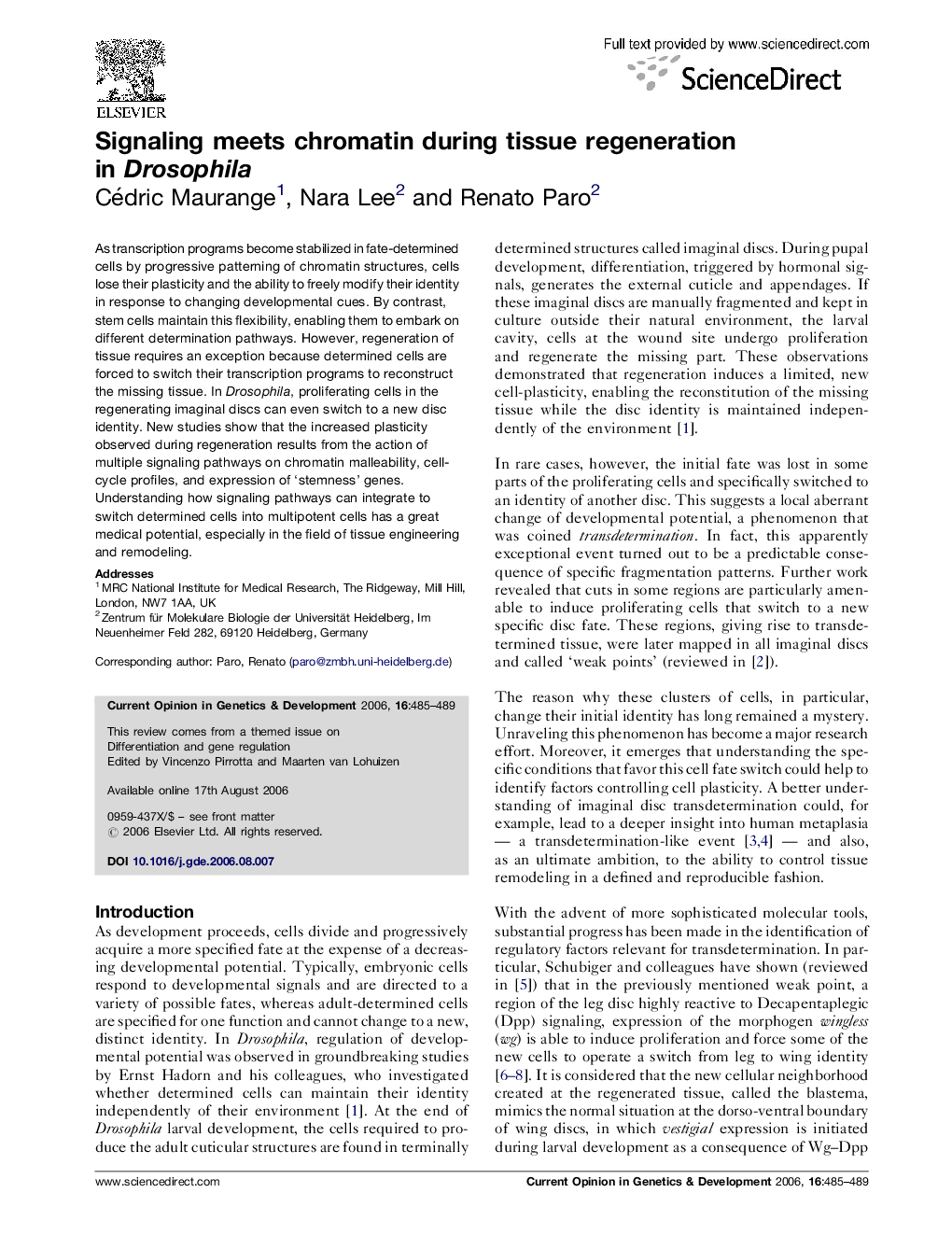| Article ID | Journal | Published Year | Pages | File Type |
|---|---|---|---|---|
| 2785251 | Current Opinion in Genetics & Development | 2006 | 5 Pages |
As transcription programs become stabilized in fate-determined cells by progressive patterning of chromatin structures, cells lose their plasticity and the ability to freely modify their identity in response to changing developmental cues. By contrast, stem cells maintain this flexibility, enabling them to embark on different determination pathways. However, regeneration of tissue requires an exception because determined cells are forced to switch their transcription programs to reconstruct the missing tissue. In Drosophila, proliferating cells in the regenerating imaginal discs can even switch to a new disc identity. New studies show that the increased plasticity observed during regeneration results from the action of multiple signaling pathways on chromatin malleability, cell-cycle profiles, and expression of ‘stemness’ genes. Understanding how signaling pathways can integrate to switch determined cells into multipotent cells has a great medical potential, especially in the field of tissue engineering and remodeling.
